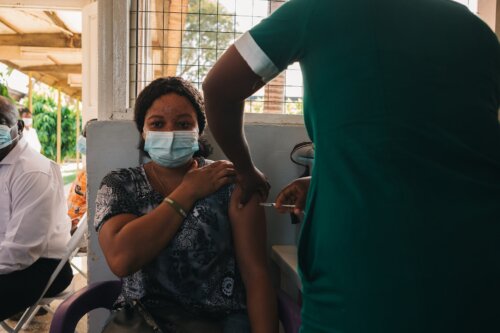7 Common Myths About HIV/AIDS (And Why They’re Not True)

When AIDS first made headlines back in the 1980s, there was plenty of misinformation surrounding the newly-discovered disease.
Today, despite all of the information made available about HIV/AIDS, there are still so many common misconceptions floating around.
We’re here to set the record straight and answer questions you may be wondering about—or are too afraid to ask.
Here are seven of the most common myths about HIV/AIDS—and the facts to counter them.
Myth #1: HIV/AIDS is no longer a crisis.
You might not see HIV/AIDS on the news every day like it once was back when the disease was first discovered—but the crisis is far from over.
Roughly 3 new people contract HIV every minute and this year, nearly 700,000 people will die of AIDS-related illnesses. In the US alone, 1.2 million people are estimated to be living with HIV, the overwhelming majority of which are Black and African-American gay men. These numbers should be front-page news. The fight is not over until it is over for everyone.
Yes, the world has come a long way in the fight against AIDS, but unless we act now, all the progress we’ve gained is in incredible jeopardy. We know how to end this disease once and for all—and we need your help in doing it.
Myth #2: You can contract HIV from touching someone who is HIV-positive.

False. According to the Center for Disease Control, HIV can NOT be transmitted through air, water, saliva, sweat, tears, or sharing a toilet—meaning you can’t catch it from breathing the same air as an HIV-positive person, or hugging, kissing, or shaking hands.
The virus can only be transmitted through certain body fluids like blood, semen, vaginal fluid, rectal fluid, or breast milk. Therefore, it’s often transmitted through sex, when protection is not used, or through needle or syringe use. The virus can also be passed from mother to child during pregnancy, if the mother is not accessing antiretroviral medication. This is why it is so critical to ensure pregnant mothers living with HIV not only get tested, but can access and adhere to treatment throughout pregnancy and during breastfeeding.
In instances of sex between an HIV-positive and an HIV-negative partner, condoms are highly effective in preventing the transmission of HIV. When condoms are paired with antiretroviral medication, they provide even more protection. And with the introduction of new medication and treatment like PrEP and long-lasting injectables, the most-at-risk communities are able to further protect themselves from contracting HIV.
Myth #3: AIDS is a death sentence.
Not anymore. When AIDS was first discovered, there was no effective treatment available—and a diagnosis was ultimately considered a death sentence. Now, this is no longer true, thanks to the development of revolutionary treatment methods. Today, over 27 million people living with HIV are accessing treatment that allows them to live healthy, normal lives. Over the past two decades, the global rollout of treatment has saved nearly 17 million lives from AIDS-related deaths.
Myth #4: People living with HIV shouldn’t have babies.

Incorrect. When HIV-positive pregnant women adhere to life-saving HIV treatment throughout their pregnancy and during breastfeeding, they can give birth to HIV-free children.
Ending mother-to-child transmission of HIV is a crucial piece to ending AIDS as an epidemic by 2030. Worldwide, 84% of HIV-positive pregnant women are receiving this life-saving treatment for the prevention of mother-to-child transmission of HIV, a massive scale-up from 45% in 2010. We must continue to scale up prevention services to ensure that every child, everywhere is born HIV-free.
Myth #5: HIV is a “gay” disease.
False. The first documented AIDS cases in the US in the 1980s were among gay men and men who have sex with men. At the time, HIV and AIDS were unknown and mysterious, leading fear, misinformation, and discrimination to label the disease as “gay.” While HIV continues to disproportionately impact LGBTQ+ individuals, it is by no means confined to this group. Unfortunately, the stigma surrounding HIV continues to keep patients from accessing the care they need to stay healthy and alive.
Myth #6: There is a cure for HIV/AIDS.

You may have seen news that a few patients were seemingly cured of HIV through a clinical trial. While this exciting progress signifies new innovations and advancements in the AIDS fight, health experts caution that this treatment is considered very risky and is not yet scalable.
Though there is no proven cure for HIV, current antiretroviral medications allow HIV-positive people to live healthy lives with roughly the same life expectancy as those who are HIV-free.
Myth #7: Ending AIDS is beyond our control.
100% false. The power to end AIDS is in our hands—and you can start just by joining (RED). With every (RED) product or action you take, you can be a powerful force in the fight to end AIDS.


